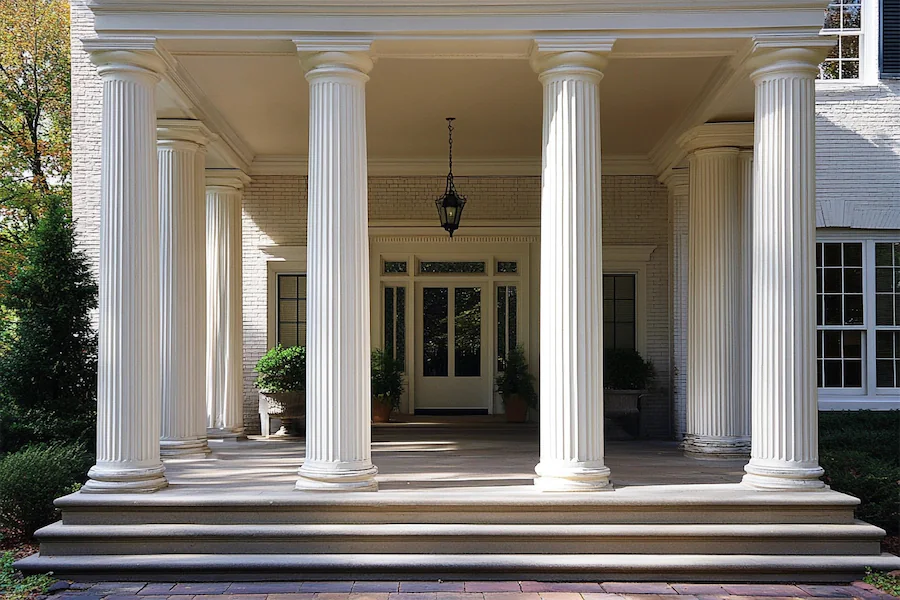Georgian Revival architecture, which gained prominence in the late 19th and early 20th centuries, is a style that draws inspiration from the Georgian period of the 18th century. This architectural approach emphasizes symmetry, proportion, and classical details, with columns serving as a defining feature.
History and Origins of Georgian Revival Architecture
The Georgian Revival style emerged as a nostalgic homage to the architectural designs prevalent during the reigns of the British monarchs named George, spanning from 1714 to 1830. This revival gained traction in the United States around the time of the American Centennial in 1876, as there was a renewed interest in colonial architecture. The style became particularly popular in the early 20th century, influencing the design of residential, institutional, and civic buildings.
Key Features of Georgian Revival Columns
Columns in Georgian Revival architecture are integral to its stately and formal appearance. Key characteristics include:
- Classical Orders: The use of classical column orders—Doric, Ionic, and Corinthian—is prevalent. These columns often support porticos or entryways, adding grandeur to the façade.
- Symmetry and Proportion: Columns are strategically placed to maintain the symmetrical and balanced design that is characteristic of Georgian architecture.
- Decorative Elements: Columns may be adorned with fluting, entasis (a slight bulge to counteract optical illusion), and are often topped with decorative capitals, enhancing the visual appeal.
Applications of Georgian Revival Columns
In Georgian Revival architecture, columns are utilized in various ways:
- Entry Porticos: Columns support prominent porticos, creating an impressive entrance and providing shelter.
- Porches and Verandas: They frame porches, adding elegance and serving as transitional spaces between the exterior and interior.
- Structural Support: Beyond their aesthetic function, columns provide essential structural support to overhanging elements and roofs.
Considerations When Choosing Georgian Revival Columns
When incorporating columns into Georgian Revival designs, consider the following:
- Material Selection: Traditionally, columns were made from wood or stone. Modern adaptations may use materials like fiberglass or composite for durability and reduced maintenance.
- Authenticity: To maintain historical accuracy, the proportions and detailing of the columns should adhere to classical architectural standards.
- Maintenance: Regular upkeep is necessary to preserve the appearance and structural integrity of the columns, especially if traditional materials are used.
Conclusion
Columns are a quintessential element of Georgian Revival architecture, embodying the classical influences and emphasis on symmetry that define the style. Their thoughtful incorporation enhances both the aesthetic appeal and structural functionality of buildings, continuing to evoke the timeless elegance of the Georgian era.
